Alfons Maria Mucha (24 July 1860 – 14 July 1939), also known as Alphonse Mucha, was a Czech painter known for his distinctive colorful style, depictions of women, as well as other paintings, illustrations, postcards and advertisement designs. Along with Gustav Klimt, Aubrey Beardsley, Antoni Gaudí and Henri de Toulouse, he is a major figure in the artistic “new wave” movement called “Art Nouveau,” that is playfully characterized by intricate linear designs and flowing curves based on natural forms. This movement was very popular from the 1890s until its decline after the First World War.
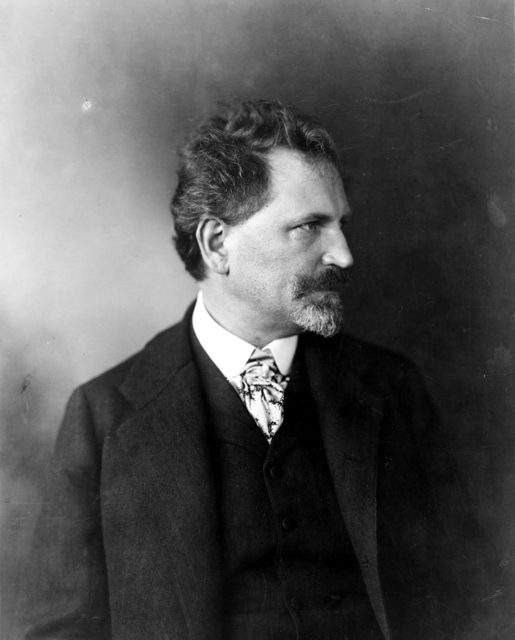 Alphonse Mucha, photographed around 1906
Alphonse Mucha, photographed around 1906He was born in the town of Ivančice, Moravia, which is now a region of the Czech Republic. As a child, he spent his time as a choirboy at the Saint-Peter Cathedral in Brno, since he had quite the talent for singing. He had his first glimpse of high-style art in the Baroque church and since then drawing became his main hobby.
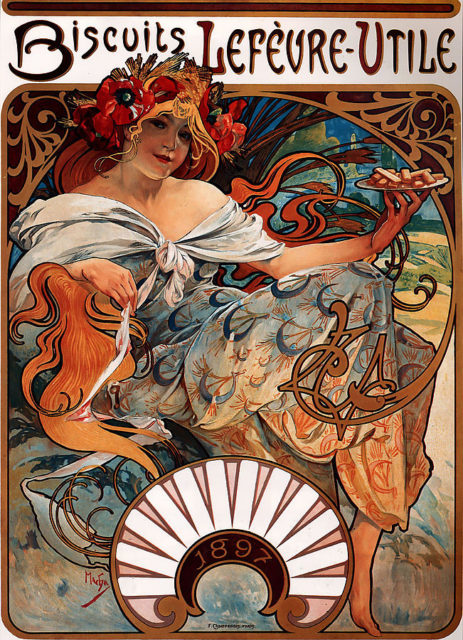 Biscuits Lefèvre-Utile. 1896
Biscuits Lefèvre-Utile. 1896Mucha was painting theatrical scenery and backgrounds as a decorative painter in Moravia, honing his skills that would come in handy afterward. In 1879, he moved to Vienna to work for a large theater design company, but in 1881 a fire burned down the business and he had to go back to Moravia. From there he worked as a freelance decorator and painter.
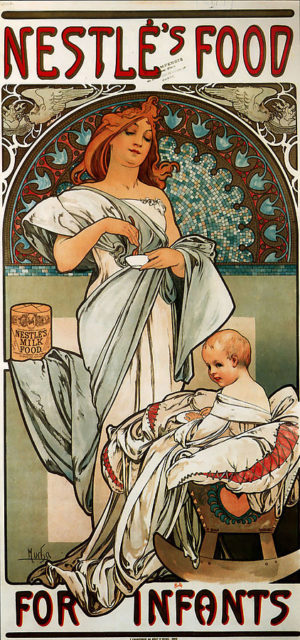 Nestlé’s Food for Infants. 1897
Nestlé’s Food for Infants. 1897He married Maruška Chytilová in Prague on 10 June 1906. The couple visited the U.S. from 1906 to 1910, and there they had a daughter named Jaroslava. Their son, Jiří, was born in Prague in 1915. Jiří Mucha would later become a journalist, writer, screenwriter, and an author of autobiographical novels that would revive the importance of his father’s work. When Czechoslovakia claimed independence after WWI, Mucha was responsible for designing and making new postage stamps, government documents and even new banknotes for the newly born state.
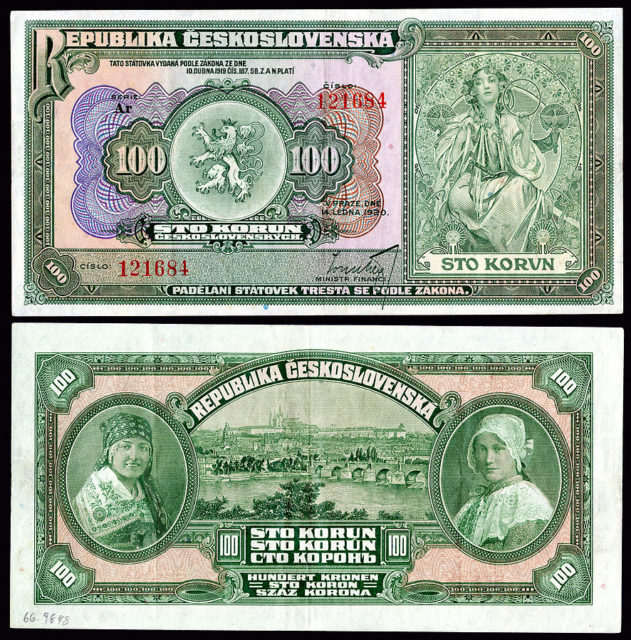 Mucha’s design on a 100 korun note. The Republic of Czechoslovakia. 1920
Mucha’s design on a 100 korun note. The Republic of Czechoslovakia. 1920
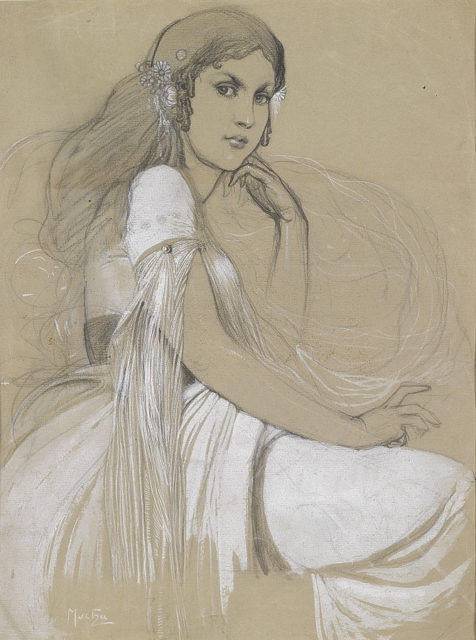 Jaroslava Mucha, the artist’s daughter. 1920
Jaroslava Mucha, the artist’s daughter. 1920His formal artistic education began when Mucha impressed a prominent count named Karl Khuen of Mikulov after decorating the murals and walls of Hrušovany Emmahof. The count was pleased with the work and he sponsored Mucha’s formal training at the prestigious Academy of Fine Arts in Munich. In 1887, Mucha moved to Paris to study at Académie Julian and Académie Colarossi, where he learned new skills like illustrating advertisements and magazines.
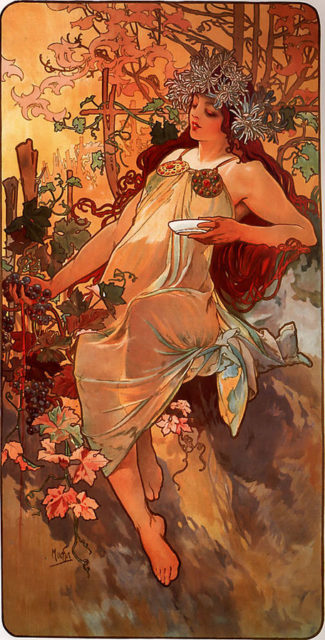 Autumn from The Four Seasons. 1896
Autumn from The Four Seasons. 1896Mucha is most known for his artistic depictions of women on posters and advertisements for absinthe, but his first big time in the painting business was when he found out that an advertisement poster was needed for a play called “Gismonda,” around Christmas in 1894. The famous actress, Sarah Bernhardt, was acting at the Théâtre de la Renaissance on the Boulevard Saint-Martin, and he volunteered to produce a lithographed poster for the play, where his work gained much attention.
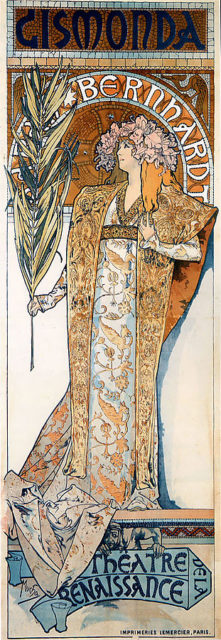 The theatrical poster for Gismonda. 1894
The theatrical poster for Gismonda. 1894Bernhardt was so satisfied with the success of this first poster that she began a six-year contract with Mucha.
Now that the new movement had garnered much attention, Mucha was tirelessly producing a flurry of paintings, posters, advertisements, and book illustrations, as well as designs for jewelry, carpets, wallpaper, and theater sets. In the beginning, this form of art was termed The Mucha Style, and he himself was regarded as a forerunner for what became known as Art Nouveau.
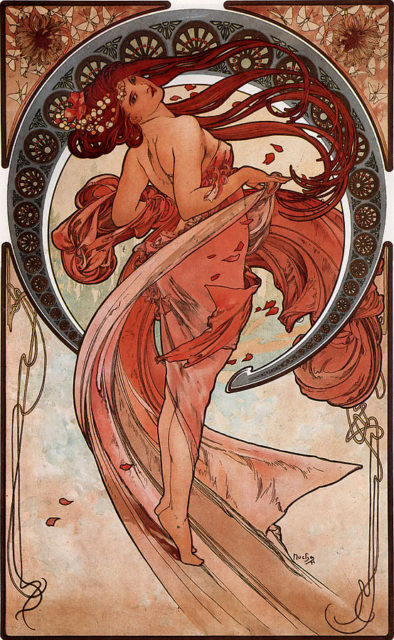 “Dance” from “The Arts”. 1898
“Dance” from “The Arts”. 1898Mucha never wanted to associate himself with this newly born art movement, and he only wanted to communicate a spiritual message, insisting his paintings were entirely a product of his own imagination and Czech art. He expressed his rage and frustration because of all the rapid fame he gained throughout his art. He was also a restorer of Czech freemasonry.
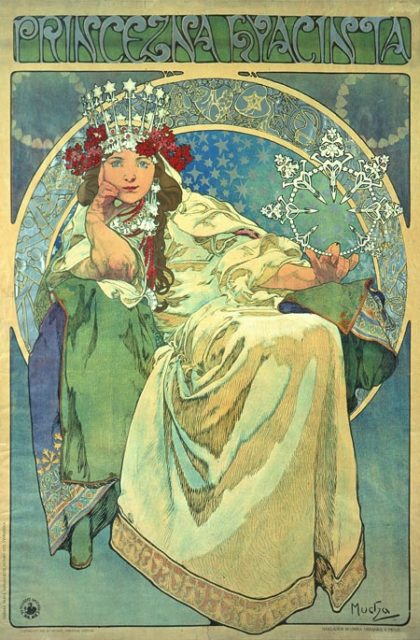 Prinzessin Hyazinthe – 1911
Prinzessin Hyazinthe – 1911His works included beautiful young women, adorned with flowers and halos on their heads. The colorful patterns and lush backgrounds quickly caught the eyes of many people, gaining him even more reputation and recognition.
 Advertisement for Heidsieck and Co. A French champagne house. 1901
Advertisement for Heidsieck and Co. A French champagne house. 1901Le Pater was considered to be his printed masterpiece, and was his most beloved art piece as he “put his soul into it.” It was printed on 20 December 1899, as an occult examination of the themes of The Lord’s Prayer. Only 510 copies were made.
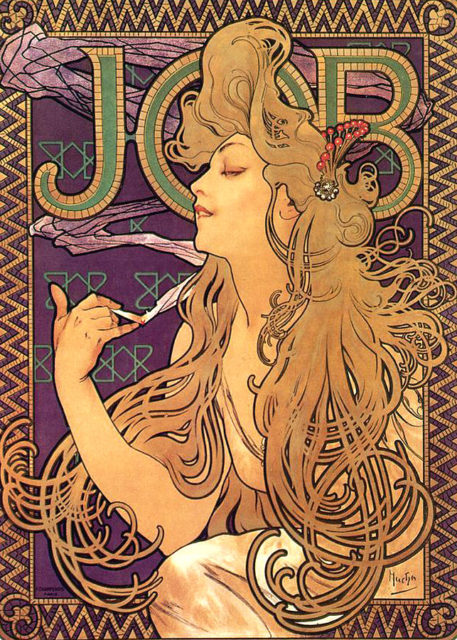 Advertisement for “Job Cigarettes”
Advertisement for “Job Cigarettes”Le Pater may be Mucha’s favored piece, but his famous “The Slav Epic (Slovanská Eepopej)” was considered his most famous masterpiece. The Slav Epic is a series of twenty paintings, depicting the history of the Slavic people as a celebration of their culture. It was on display in the Moravský Krumlov chateau in the South Moravian Region in the Czech Republic, from 1963 to 2012 . Since 2012, it has been on display at the National Gallery of the Veletržní Palace in Prague.
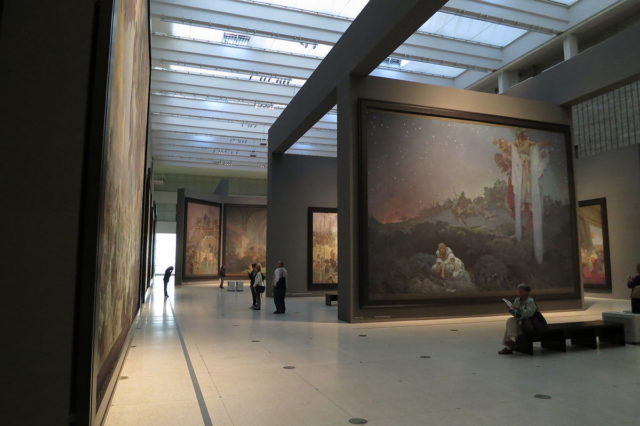 Overview of Veletržní Palác with The Slav Epic, in Prague. Photo Credit
Overview of Veletržní Palác with The Slav Epic, in Prague. Photo CreditThe rise of fascism during the 1930s marked the start of Mucha’s downfall. When German troops started deploying in 1939, he was among the first arrested by the Gestapo, because of his artwork depicting Slavic people and Czech nationalism.
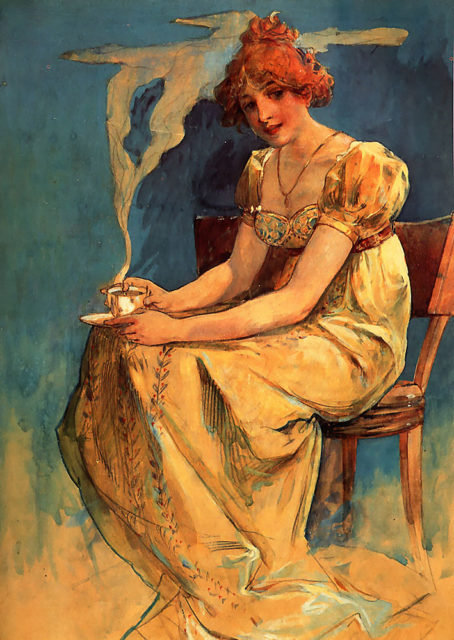 Untitled (seated woman with coffee cup). Watercolor
Untitled (seated woman with coffee cup). Watercolor
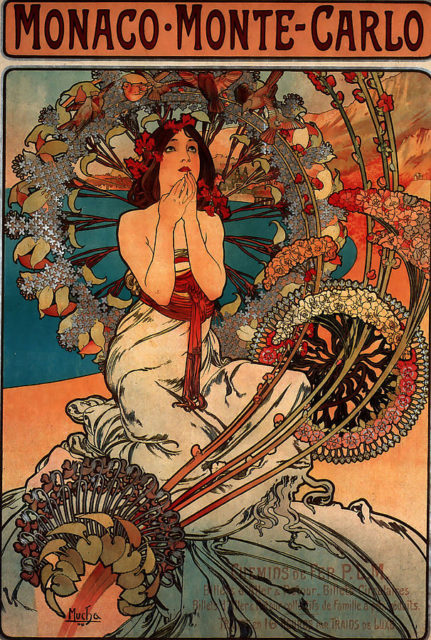 Monaco Monte Carlo
Monaco Monte Carlo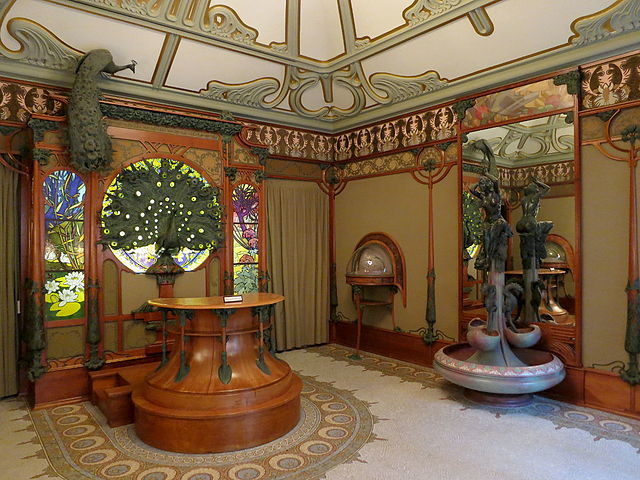 Mucha interior decoration at Georges Fouquet jewelry on rue Royale in Paris
Mucha interior decoration at Georges Fouquet jewelry on rue Royale in Paris












Pentru a putea adăuga comentarii trebuie să fii membru al altmarius !
Alătură-te reţelei altmarius